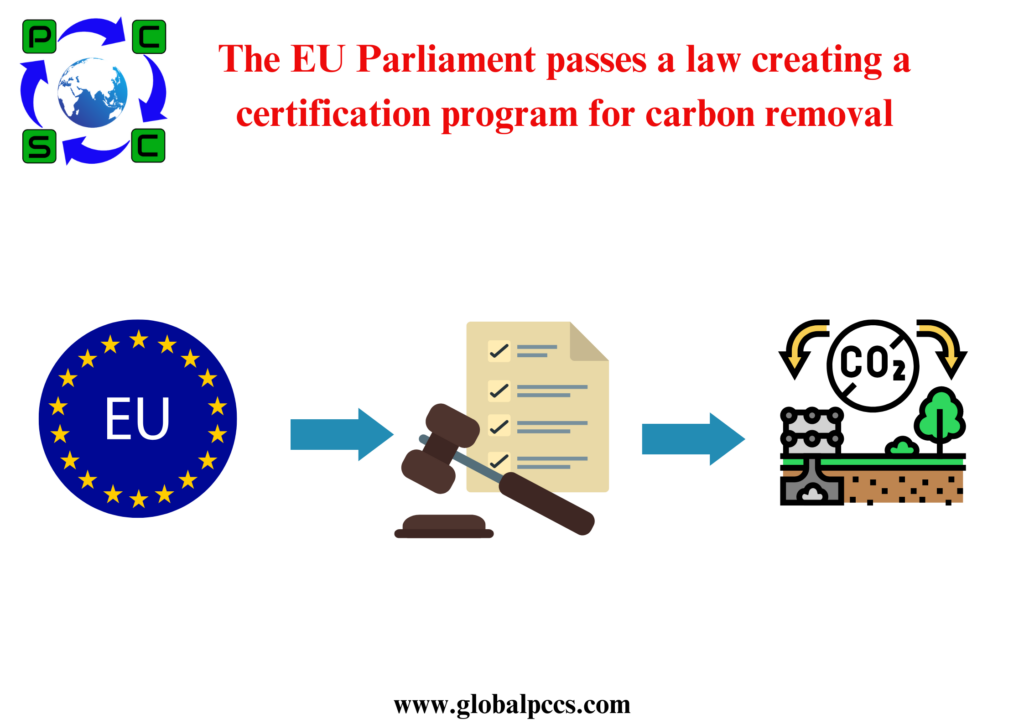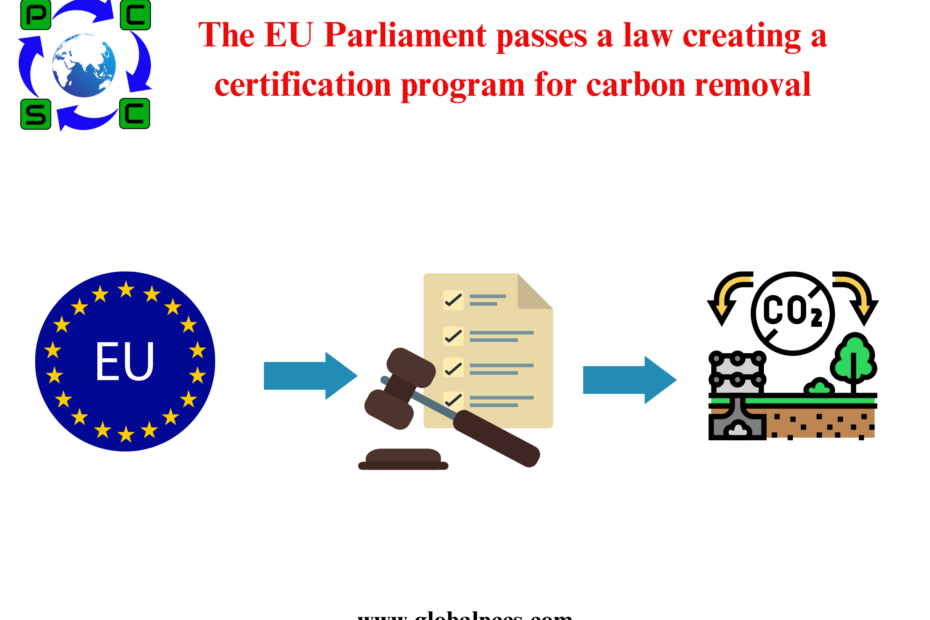 The European Parliament passed a new rule that would create a certification system to measure, track, and confirm carbon reductions and combat greenwashing.
The European Parliament passed a new rule that would create a certification system to measure, track, and confirm carbon reductions and combat greenwashing.
The adoption, which was approved by MEPs 441-139, is one of the last steps toward the introduction of a comprehensive framework for soil emission reduction and carbon removal in EU legislation. This framework aims to increase the use of carbon removals while addressing concerns about greenwashing, fostering trust, and promoting the development of carbon removal technologies. Additionally, it seeks to create income opportunities for land managers and industries that implement carbon removal solutions and engage in innovative carbon farming practices.
The European Commission unveiled the first version of the certification system in 2022 as a component of the European Green Deal, the EU’s plan to become carbon neutral by 2050. Although the approach mainly depends on absolute reductions in greenhouse gas (GHG) emissions, any emissions that cannot be completely eradicated will need to be offset by carbon removals.
In order to ensure the quality and comparability of carbon removals, the Commission proposed a certification process that included a number of requirements, such as the need to accurately measure the benefits to the climate and make the activities additive to current practices; the requirement that certificates be linked to the length of carbon storage; and the requirement that the carbon removal activity preserve or contribute to sustainability goals like biodiversity, water and marine resources, climate change adaptation, and the circular economy.
Environmental sustainability-focused organizations, on the other hand, took issue with the original plan, claiming that the proposed regulations were too ambiguous and open to greenwashing.
The EU Parliament passed a resolution on sustainable carbon cycles in response to the Commission’s proposal. It acknowledged that carbon removals could help reduce climate change and address emissions that cannot be eliminated, but it cautioned against depending too heavily on them in order to achieve the EU’s climate goals.
The EU Parliament and Council reached a consensus on a framework that distinguished between different types of carbon removal and emission reduction activities during discussions on the final rules for the new certification system. These included permanent carbon removals, which store atmospheric or biogenic carbon for several centuries, temporary carbon storage in durable products that last for at least 35 years, temporary carbon storage from carbon farming, such as restoring forests and soil and managing wetlands, and soil emission reduction from carbon farming.
In order to handle incidents of reversal, when carbon is released back into the atmosphere during the monitoring period, the agreement also called for the introduction of culpability mechanisms throughout the development of the certification procedures.
Along with introducing sustainability requirements for carbon farming activities under the scheme to generate co-benefits for biodiversity and ecosystems, Parliament and the Council also expanded the scope of the legislation to include certain carbon farming activities that reduce emissions from agricultural soils. Furthermore, all carbon removal activities had to meet these sustainability requirements to avoid causing significant harm to the environment.
After passing the legislature, the new law must now be ratified by the EU Council’s member states in order to become operative.
While most businesses’ net zero plans include the use of offsetting practices to account for emissions that are more difficult to eliminate, some businesses’ climate pledges are coming under increased scrutiny for placing an undue emphasis on offsetting schemes rather than real emissions reductions. Climate-focused non-profits NewClimate Institute and Carbon Market Watch, for example, conducted a recent study of high-emitting companies. The study revealed that the companies aim to offset between 23% and 45% of their total emission footprint, and that the amount of land-use related offsets included in corporate climate strategies would significantly outweigh the availability of such assets globally.








 Authorised IMDS & CDX Training & Consulting partner for
Authorised IMDS & CDX Training & Consulting partner for





